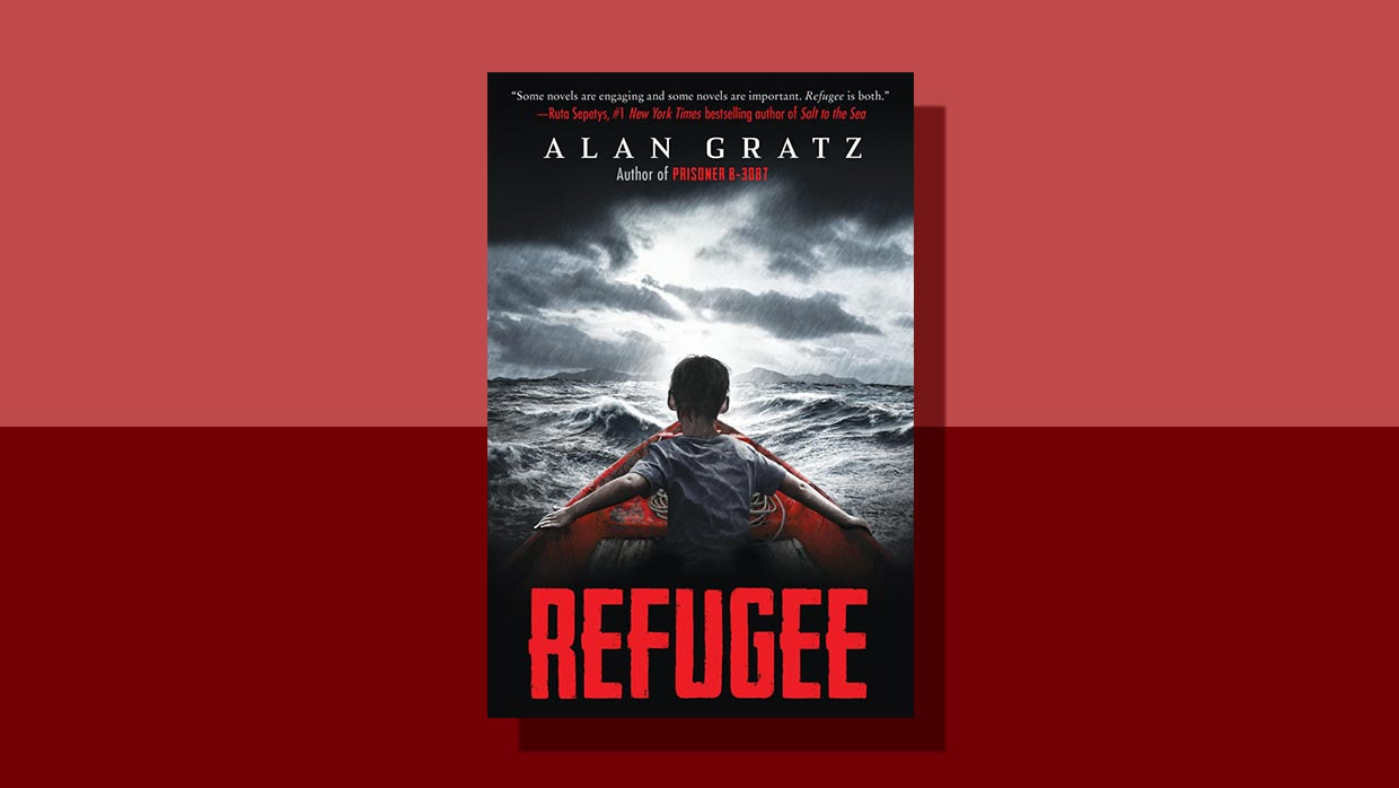In Refugee, author Alan Gratz shares the stories of three young people looking for a place to live in peace — Josef in 1930s Nazi Germany, Isabel in 1990s Cuba, and Mahmoud in present-day Syria. Though they all come from different places and grew up in different times, they all share similar struggles as they seek out a better life for themselves and their families.
For readers of Refugee, these stories provide an opportunity to learn about the harsh realities of war and economic crisis that motivate people to seek refuge. Through its structure and organization, the book is able to present complex themes and ideas in a way that enables students to fully grasp them. It also allows teachers like you to take advantage of a variety of thought-provoking activities and resources to help further students’ understanding of the ideas presented.
Perfect for in-class discussion — and a great option for book reports — Refugee provides students with the chance to use their imaginations and make real-world connections. Overall, Alan Gratz titles like this one are an effective and beneficial way to study the genre of historical fiction.
During reading, it’s important to encourage students to reflect on the experiences of Josef, Isabel, and Mahmoud through writing and discussion. The following 12 prompts will help further students’ understandings of the stories detailed in Refugee by focusing on important details and themes, plus storytelling elements, such as point of view and structure.
On key ideas and details
1. Discuss the reasons that Josef, Isabel, and Mahmoud’s families leave their homes. What are the situations in each of their lives that force them to flee? How are their situations similar and how are they different?
2. What is the theme of this book as expressed through the central characters? What do you feel is the most important idea in each of these stories? Provide examples in the plot of each story to support your ideas.
3. Discuss the personalities of each of these young people: Josef, Isabel, and Mahmoud. In what ways do each of them have to take charge of their families’ plights at different points in their story? Describe the points at which each young person has to act as an adult.
4. How do the parents in each of these families change in the course of their journeys? Compare the fathers and mothers of Josef, Isabel, and Mahmoud, and discuss the ways that events in each story shape their responses to their situation.
5. Compare the method of travel for each of these refugee families. How does Josef’s sea voyage compare to those of Isabel and Mahmoud? What is the most threatening part of each of these voyages and how do those threats create obstacles for the families as they travel?
On craft and structure
6. Josef says, “It was like they were invisible . . . people chose not to see them.” (p. 18) How does this simple statement reflect his experience on the train in Nazi Germany? Why do the people ignore them? Compare his experience to Mahmoud’s when he says, “They only see us when we do something they don’t want us to do.” (p. 214)
7. Why do you think the author chose to tell these three stories in alternating chapters? What is the effect on the reader of moving back and forth between the stories from different periods of history?
8. Who are the helpful people in each of these three journeys? Why do others treat the refugees with meanness and disrespect? How do these experiences affect each of the families and lead to the survival of certain family members?
9. How does the author develop the point of view of each of the characters? What is the impact of seeing how many days each character has been away from home at the start of each section? How do the stories of these three children intersect in the end, even though they are separated by many years?
On integration of knowledge and ideas
10. Listen to the Refugee audiobook. What is the experience of hearing the main characters speak rather than reading their words on the page? How does your perception of these stories change when you hear them narrated?
11. Compare the stories of Josef, Isabel, and Mahmoud to others you have read about refugee children. There are many stories of Holocaust victims like Josef and his family, but few that recount events that are more recent, such as the war in Syria. Compare the experience of Mahmoud’s family to one described in a newspaper, magazine, or online article of your choosing.
12. Research the history of the three dictators in these stories — Adolf Hitler, Fidel Castro, and Bashar al-Assad. Discuss how the policies and beliefs of these leaders have affected the lives of the characters in each story. Are the lives of the people in each of these places still the same today or have their lives improved?
After reading, consider diving deeper into contemporary stories and experiences of refugees by asking students to find places in their own community that are helping refugees settle into a new life. Discuss with your students ways they could help young people seeking refuge become acclimated to a different country with different customs.
Shop Refugee and other Alan Gratz books below! You can find all books and activities at The Teacher Store.
